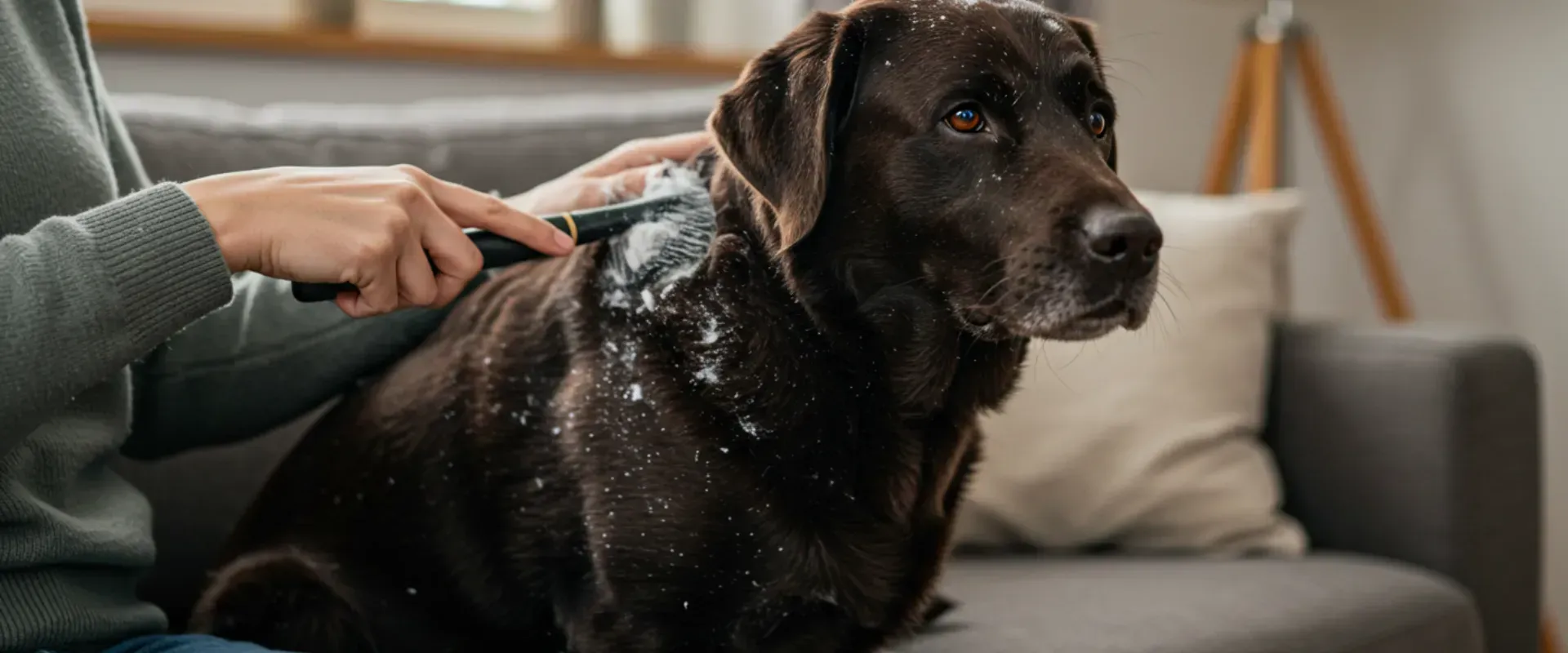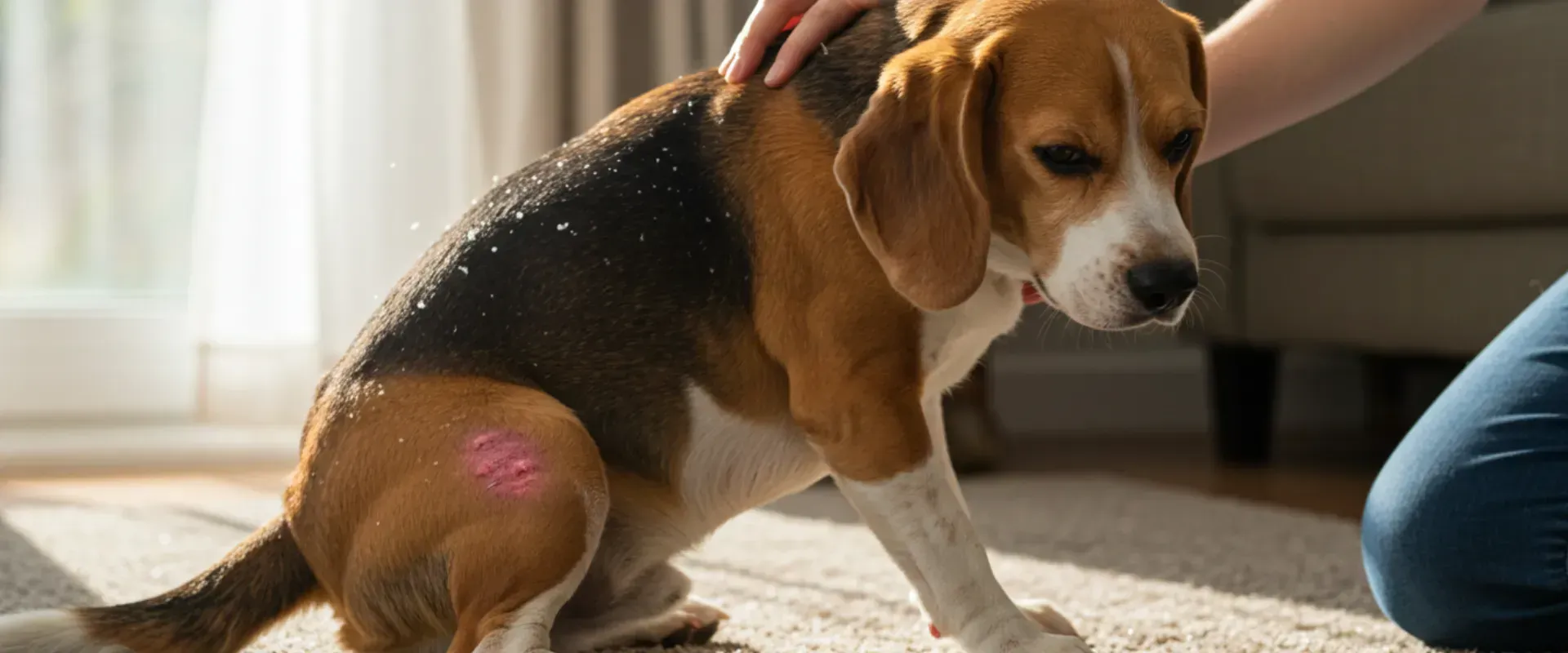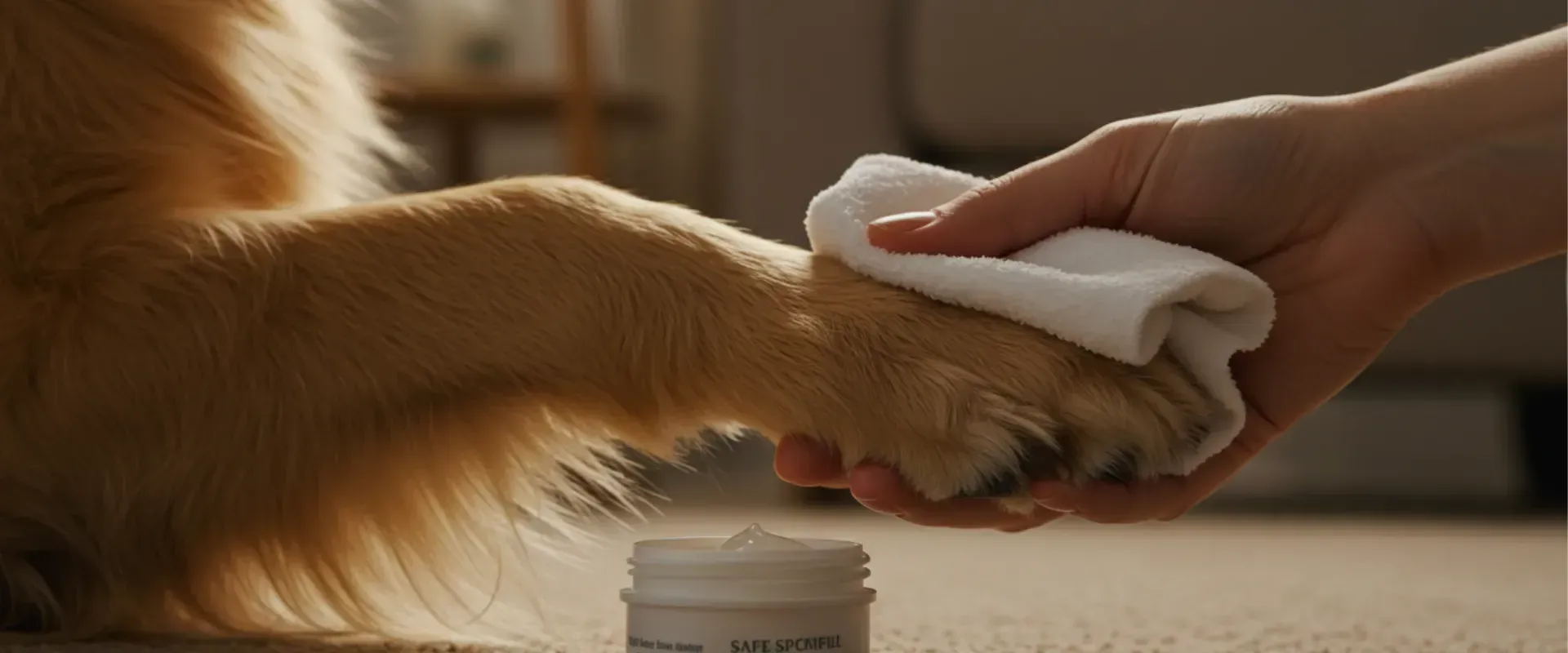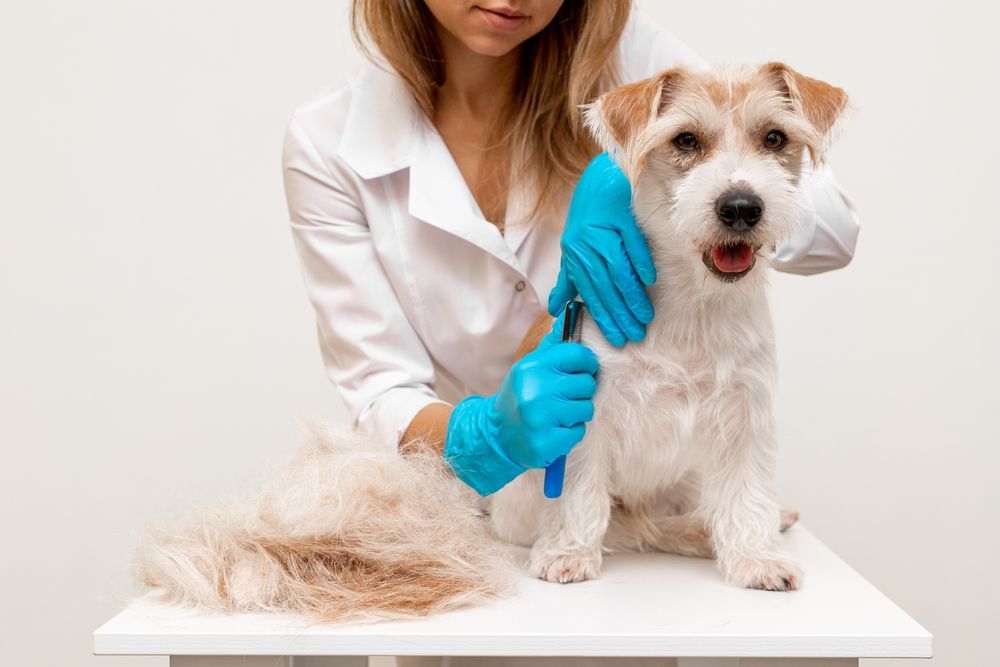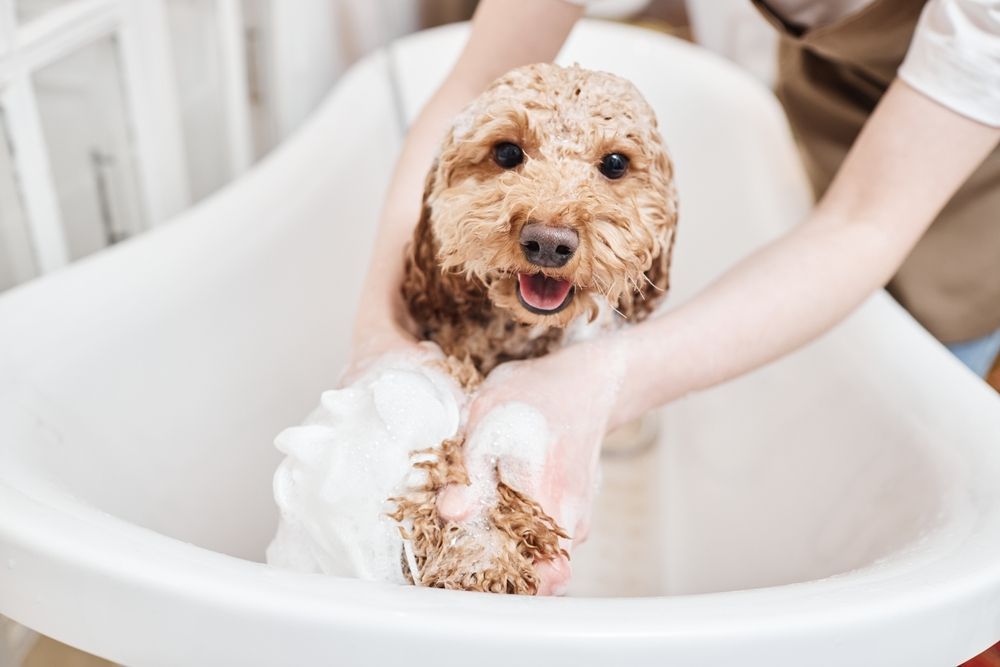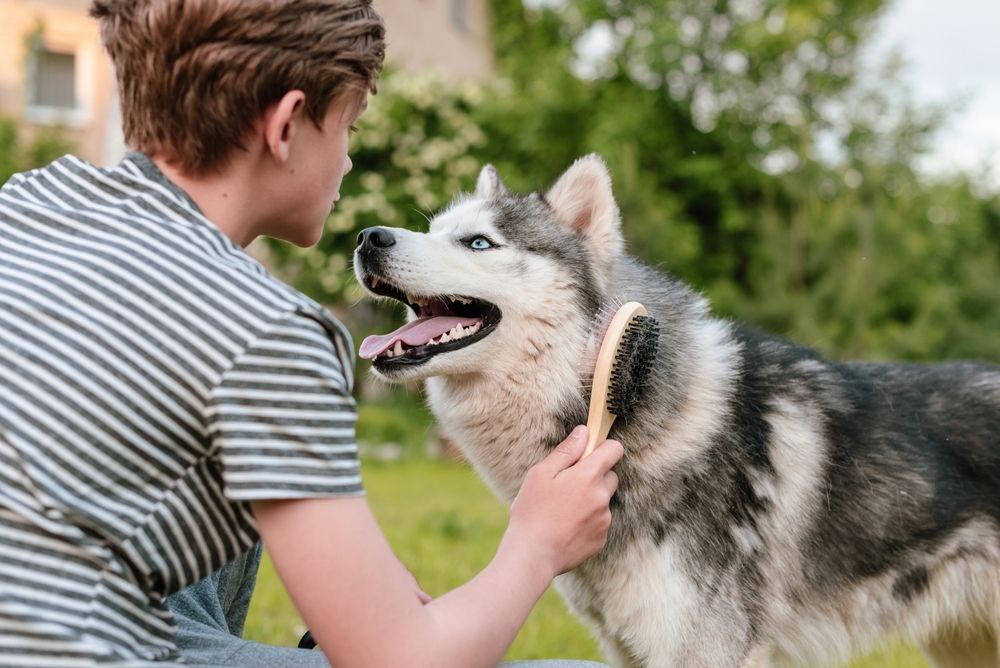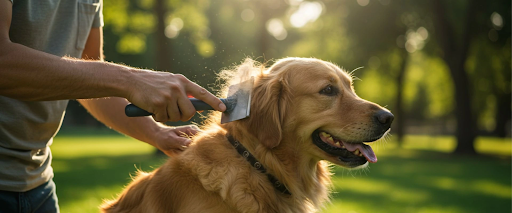How to Protect Dog Paws in Winter
Dogs love being outside all year, but cold weather can be tough on their paws. Snow, ice, salt, and chemical ice-melt can cause dryness, cracks, or even burns. The freezing ground can also make every step painful. If these problems aren’t treated, they can turn into infections.
Dogs that are very active or live in colder areas feel it even more because they spend more time on icy or rough ground. Taking simple steps to protect dog paws in winter keeps them comfortable and stops small issues from getting worse. A mobile pet groomer can also help by trimming, cleaning, and conditioning paws to make winter walks safer.
Understanding Winter Dog Paw Care Problems
Winter conditions can be tough on a dog’s paws, and knowing the risks helps prevent painful problems.
Cold Temperatures and Frostbite
Walking on frozen ground for too long can cause frostbite. Signs include skin that feels brittle, swelling, or changes in color on the paw pads. Dogs with sensitive paws are most at risk, especially on very cold days.
Ice and Snow Buildup
Snow often packs between the toes, making it painful to walk. For dogs with lots of fur, ice balls can form and cut into the skin. Checking paws after every walk helps stop this before it gets worse.
Road Salt and Chemical De-icers
Salt and chemicals used to melt ice can sting paws, cause burns, or make tiny cuts worse. If dogs lick their paws after a walk, they may swallow these chemicals, which can upset their stomach. Consistent winter dog paw care and
safe grooming tips help reduce this risk.
Dryness and Cracking
Cold air outside and dry heat indoors both pull moisture out of the skin. Over time, paws can become dry, rough, or cracked. Cracks are painful and can lead to infection.
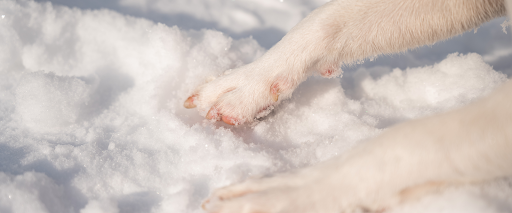
Preventive Measures to Protect Dog Feet from Snow
Taking proactive steps goes a long way toward keeping paws safe and healthy during winter walks.
Regular Paw Checks
Before and after walks, look closely at your dog’s feet. Check for cuts, cracks, or stuck pebbles. Wipe paws with a damp cloth to remove salt, ice, or chemicals. This simple step helps protect dog feet from snow and other winter problems.
Moisturizing and Protecting Paws
Cold weather can dry out paw pads quickly. A pet-safe balm or wax creates a shield and keeps moisture in. Choose natural products like shea butter or beeswax. Avoid human lotion, since it can make paws too soft.
Trimming Paw Hair
Snow and ice easily stick to long fur between the toes. Carefully trimming this hair helps stop ice from clumping. Regular trims also prevent mats that pull on the skin. Basic grooming such as
sanitary trim or
dog nail trimming keeps paws healthy in winter.
Massaging Paws
A gentle hydro massage helps blood flow and keeps paws flexible in cold weather. It also makes it easier to spot early signs of swelling or soreness. Many dogs enjoy it, making paw care more relaxing.
Dog Paw Balm Tips and Protective Gear
Some dogs need an extra layer of protection when winter conditions get harsh, and the right gear makes a big difference.
Dog Booties
Booties keep paws warm and shield them from salt, ice, and rough roads. Choose ones with non-slip soles and secure straps. Getting dogs used to booties takes time, start small and reward with treats.
Alternatives to Booties
Some dogs hate footwear. Disposable paw covers, paw wax, or light balms are good alternatives. These dog paw care tips are especially useful for
double-coated dogs grooming, since booties may feel too bulky.
DIY Solutions
If you don’t have proper paw gear, you can make a quick fix with vet wrap or dog-safe tape. Just don’t wrap it too tight, or it can cut off blood flow and hurt your dog. DIY fixes should only be used for a short time until you have proper gear.
Safe Winter Walking Practices to Protect Dog Paws
Every day walking habits play a big role in keeping paws comfortable and injury-free during colder months.
Route Planning
Pick walking paths that are free of heavy salt or chemicals. Grassy areas or cleaned sidewalks are easier on paws. Cleared trails also reduce the chance of cuts from sharp ice.
Timing and Duration
Midday walks are best, since the sun warms things up a little. On very cold days, keep walks short to prevent frostbite.
Use Pet-Safe De-icers
For your yard, choose de-icers labeled safe for pets. They melt ice without burning paws. If your dog steps on unknown chemicals, rinse their paws right away. This is one of the simplest winter dog grooming tips to follow.
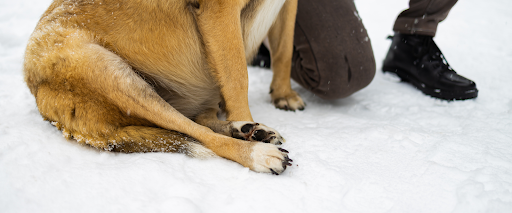
Post-Walk Care for Winter Dog Paw Health
The way you care for paws after a winter outing is just as important as the walk itself. A few simple steps can make recovery easier and prevent long-term irritation.
Cleaning Paws
After each walk, wipe paws with a warm, damp cloth or use a paw washer. Don’t forget between the toes, where ice, salt, and debris hide. Regularly
cleaning dog paws can reduce the chance of burns or stomach problems from licking.
Drying and Moisturizing
Dry paws do well with a soft towel. Damp paws can lead to infection or make cracks worse. After drying, apply a thin layer of balm to soothe and protect the pads.
Warm Water Soaks
If paws are very dry or sore, soak them in lukewarm water for a few minutes. This helps remove salt and eases discomfort. Pat dry fully, then add balm for healing. Simple routines like these are part of dog grooming basics.
FAQs
How can I stop my dog from licking their paws in winter?
Licking often means paws are irritated from salt or dryness. To protect dog paws in winter, clean them after every walk, use balm, and see a vet if licking continues.
What’s the best way to clean snow off dog paws?
Use a damp cloth or paw washer, then dry well. This simple step helps protect dog feet from snow and prevents discomfort.
Mobile grooming services can also help keep paw pads healthy.
Are dog booties really necessary in winter?
Booties are very helpful for long walks on icy or salted roads because they protect dog paws in winter from frostbite and burns. For shorter trips, you can try paw wax or balm instead.
How often should I moisturize my dog’s paws?
Apply balm before walks and again if paws feel dry or cracked. In colder areas, daily moisturizing is best to protect dog feet from snow and salt exposure. Following these dog paw balm tips keeps paws soft, strong, and comfortable.
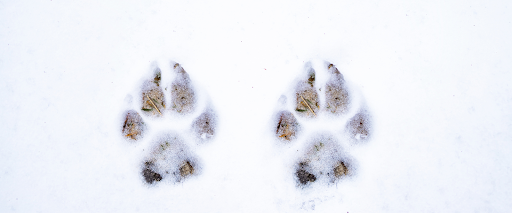
Protect Dog Paws in Winter with Consistent Care
Healthy paws keep your dog active and comfortable all winter. Cold weather brings challenges like salt, ice, and frozen ground, but small steps like checking, cleaning, and moisturizing make a big difference.
Professional grooming adds another layer of care to keep paws safe. By taking time to protect dog paws in winter, you prevent small issues from becoming painful problems. Stay consistent, and your dog will enjoy every snowy walk.
For added support,
contact us to schedule professional grooming services.


